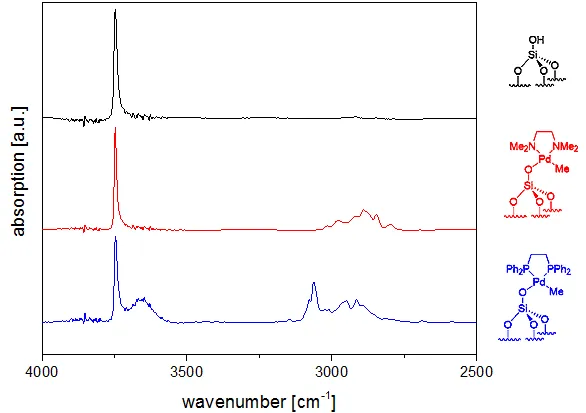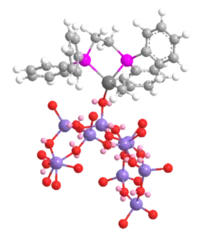Grafting – Generation of Surface Metal Complexes

„Grafting“ describes synthesis strategies from the field of Surface Organometallic Chemistry (SOMC) which generate solid catalysts with molecular defined and isolated metal centers immobilized on a chosen support.
The base principal of grafting is the proton-transfer reaction of a metal complex, which has at least one basic/alkaline ligand, with a surface hydroxyl group.
There are two possibilities to bind the isolated metal complexes onto the supports surface.
- The isolated metal center is grafted directly onto a functional surface group.
- The support surface is modified before synthesis. The functional groups of the surface react with a so-called “linker”, which will later bond the isolated metal centers to the surface hydroxyl groups.
A significant advantage of grafting is the formation of a covalent bond between the metal center and the support, which increases the stability of the isolated species. Pretreatment of the catalyst support allows a modification of the available surface hydroxyl groups (distribution and number of hydroxyl groups), which in turn controls the possible number of bonds per metal center and the metal loading of the catalyst.

Characterization by:
IR spectroscopy
solid-state NMR spectroscopy
elemental analysis
extended X-ray absorption fine structure (EXAFS)
temperature-programmed reactions
Contact:
Lea Kopietz (lea.kopietz(at)tum.de)